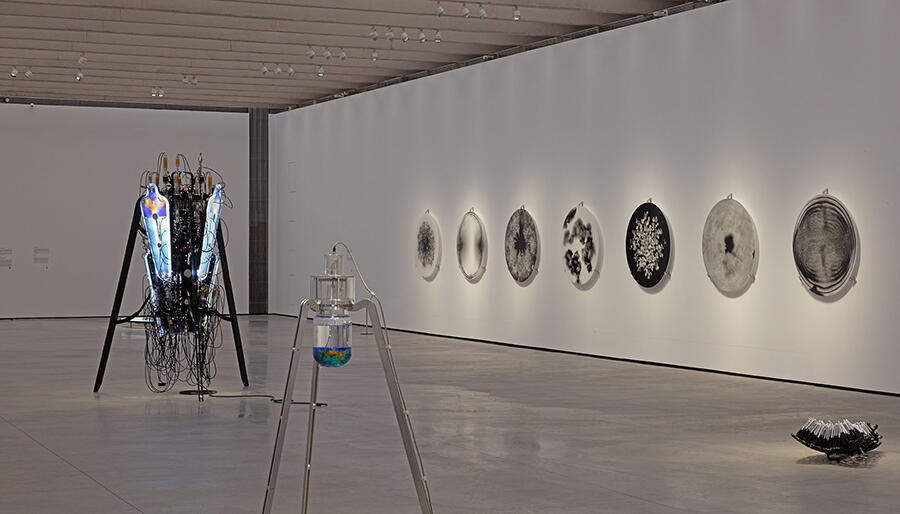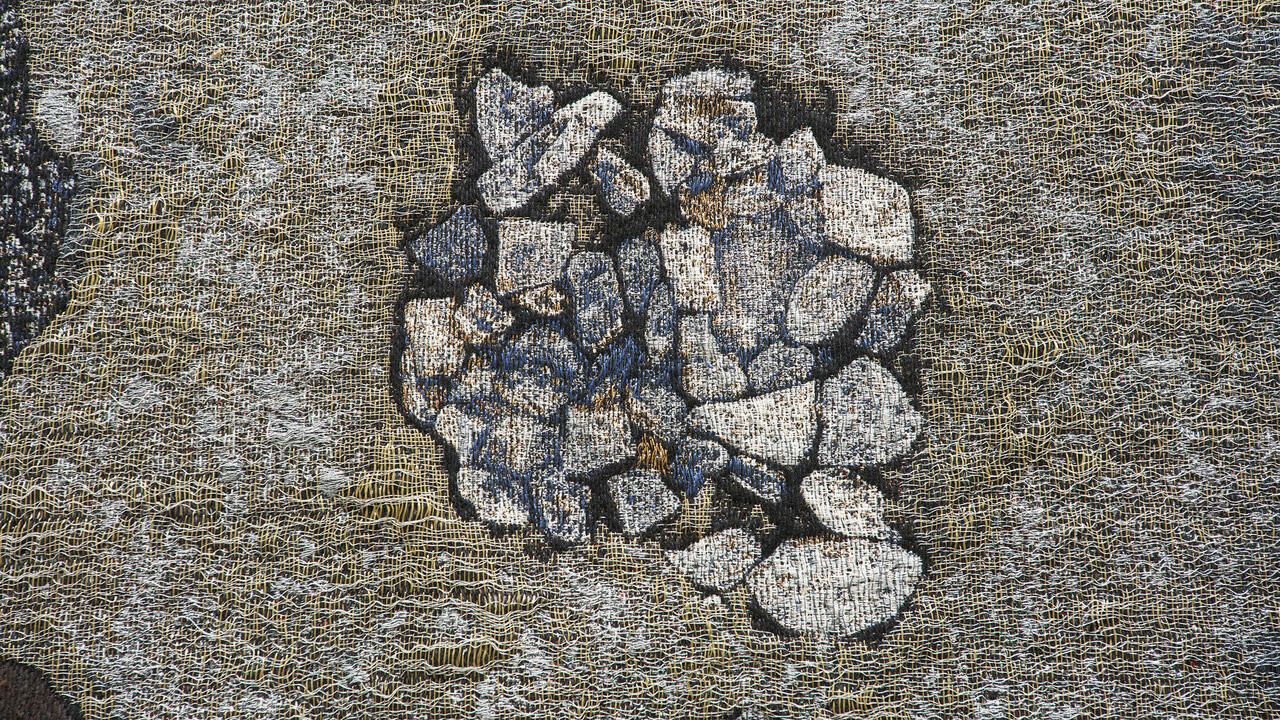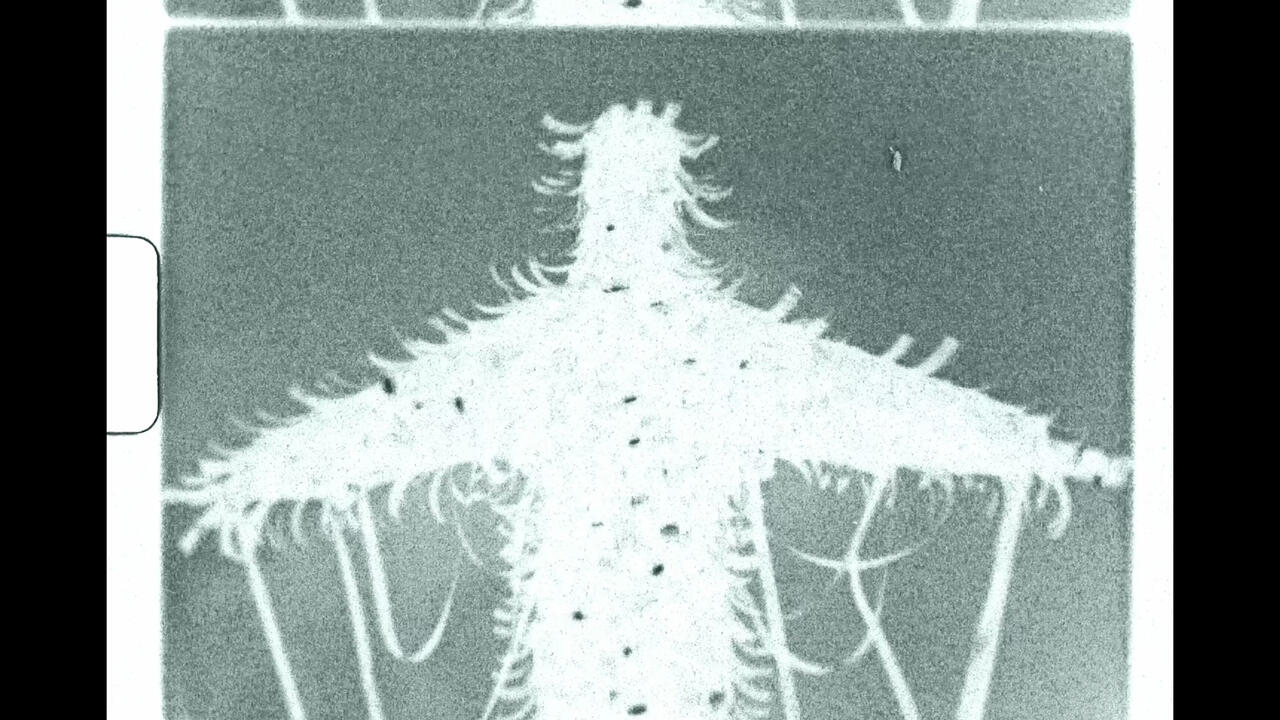The Quiet Drama of Yunchul Kim’s Kinetic Sculptures
At 798CUBE, Beijing, the artist presents marvels of engineering with lives of their own
At 798CUBE, Beijing, the artist presents marvels of engineering with lives of their own

A knot-shaped trail of oil stains the grey concrete floor in the centre of 798CUBE. Formed from dripping grease, which lubricates the mechanisms of an enormous, hanging sculpture above, it is the shadowy footprint of Yunchul Kim’s CHROMA IX (2024), a serpentine marvel of engineering that gently pulsates with an unnerving life of its own.
The artist’s largest ever solo exhibition, ‘Elliptical Dipole: Visceral Particles and Sorcerous Flows’, is arranged across two spacious floors and a landing area. It includes nine seemingly sentient sculptural installations, a collection of plan chests (Remnant Vitrine, 2024) and a series of seven wall-mounted panels (Eluvial Horizon, 2024). Multiple different materials – including aluminium, minerals and seaweed – seem to have negotiated an agreement to coexist, reacting to one another in an unfolding state of constant flux.

The 540 flexible cells comprising CHROMA IX contain a transparent laminated polymer that, under the pressure of the sculpture’s internal spine, experiences tiny deformations and frictions resulting in bursts of iridescent colour. The sculpture’s 60-metre ‘body’ moves independently of our presence, giving the impression that it is alive, passively tolerant of our watching eyes. In Triaxial Pillars II (2017), an intriguing golden fluid spurts up a two-metre transparent shaft while ball bearings excitedly judder within it – a reaction to a magnetic charge, I think. Up close, it seems to contain a thriving little world where its component materials – photonic crystals, neodymium, etc. – attempt to coagulate.
The sophistication of this apparatus and its appearance in art might suggest visions of a terrifying future society governed by powerful robotics and artificial intelligence. But I don’t experience ‘Elliptical Dipole’ as fearful, so much as curious and paradoxically retro-futuristic. Here, an artist works with a small team to realise ambitious objects as advanced as anything produced by major corporations, such as Hyundai (whose exhibition space is nearby), but towards distinctly different ends. These works accord to the sleek aesthetic of gadgets designed to improve our lives, yet what they offer is much more open-ended and ambiguous.

A series of traditionally wall-mounted circular panels, Eluvial Horizon, is at odds with the nearby sculptures, such as La Poussière de Soleils II (Dust of Suns II) (2022), which contain highly designed and machine-made elements. Instead, the white panels of Eluvial Horizon show the artist’s hand at work. Kim manipulated the black micro-sized paramagnetic particles under water using a magnet before drying, fixing and coating them, resulting in a pattern resembling an imaginary cosmic landscape.
On the gallery’s landing, plan chests contain ‘materials from artworks’, or experiments that predate the larger sculptures, as the exhibition booklet notes. This collection, which conjures up a geologist’s cabinet, conveys the sense of an artist toying with different possibilities to achieve his desired outcomes. A side note in the text clarifies that the title, Remnant Vitrine, is temporary, as these fragments and specimens are not inherently less meaningful than other works (as a ‘remnant’ might suggest), but rather full of their own vibrant potentials.

The sense of possibility produced when received characteristics are challenged permeates all these objects. The sculptures feel demonstrative, lightly asking us to consider new physical and metaphysical possibilities. Kim is a creator of unique kinetic experiments that purport to have an almost procedural function. Some wouldn’t look out of place in a futuristic hospital ward. Yet, their role isn’t clear; in fact, there isn’t one. In this way, they are performative art objects created with a profound scientific nous and informed by a creative playfulness. They flirt with us to engage in their seductive displays and quiet drama; ultimately, though, they’re fine without us.
‘Elliptical Dipole: Visceral Particles and Sorcerous Flows’ is on view at 798CUBE, Beijing, until 13 October
Main image: Yunchul Kim, ‘Elliptical Dipole: Visceral Particles and Sorcerous Flows,’ 2024, exhibition view. Courtesy: the artist and 798CUBE, Beijing





















